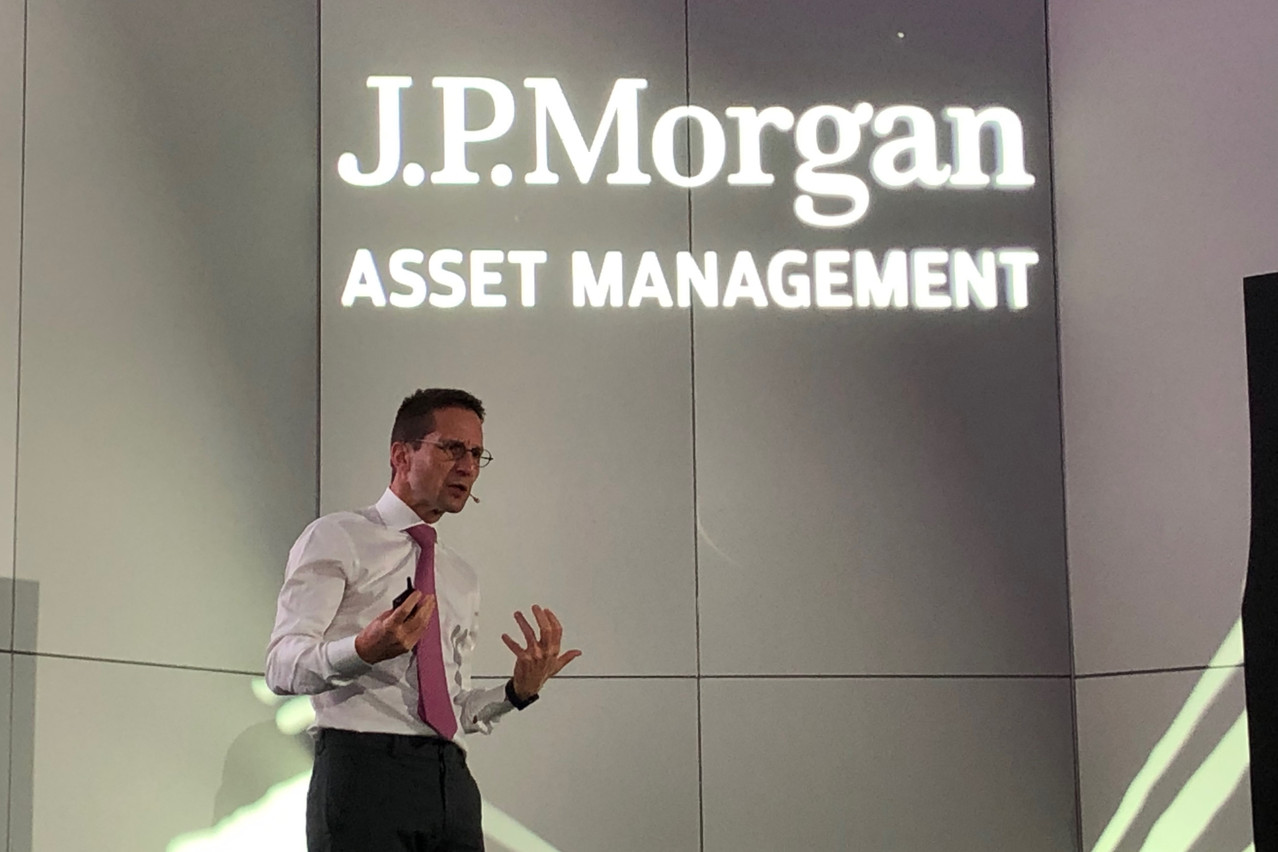“A lot of economists were expecting a US recession” in 2024, said Vincent Juvyns, global market strategist at J.P. Morgan Asset Management, during a presentation in Luxembourg in early December. He remembered that last year, some used the term “phantom recession… It was on people mind, but not in economic data.” He remarked that the running theme was that expensive US stocks would suffer from higher interest rates.
The consensus has changed considerably for 2025. “The US are probably not going to enter into a recession next year… nor accelerate,” commented Juvyns. In fact, JPMAM expects growth to decelerate between 2% and 2.5% in 2025, down from 2.8% in 2024, as the “tax cut and job act” will only have an effect in late 2025 or early 2026.
While claimed that Europe should invest more in the economy, Juvyns expects, to add insult to injury, that the 5% growth in investment in the US should be further boosted “thanks to deregulations and lower taxes.”
Besides, he observed that the two highest income groups account for over 60% of consumption in the US, which suggests that the maintenance of tax cuts for wealthy households will support consumption.
Darker clouds over the horizon
Juvyns is concerned that tariffs and immigration may “easily” bring back inflation towards 3% by year-end 2025, a real threat for the bond market. The current Trump plan suggests that the debt pile may increase by $4trn over the next 10 years, another source of concerns for the bond vigilante given the expected flood of treasury notes.
He thinks that the newly nominated treasury secretary is “pragmatic” while one must keep in mind that “many countries around the world” have levers to activate during their negotiation with the US.
60% tariffs on China: “Too big to be true”
JPMAM noted that the average tariffs on US goods imports reached a high point of almost 8% in the 1960s. According to JPMAM calculations, tariffs of 60% would boost the overall average to almost 12%, up from 1% to 2% in the early 2010s. Juvyns thinks these “quite disruptive” policies may force the upcoming administration to look for alternative options.
Even with “fractions” of the planned tariffs, Juvyns expects a terminal rate of around 3.75% in the US, in line with market expectations but at a level much higher than Federal Reserve median also known as the dot plot.
[On Europe], I was not enthusiastic last year, I’m still not
He thinks that US economy can anyway cope with the current interest rates and the financing conditions. “If you want to find financing in the US, you get it very easily,” affirmed Juvyns.
The Trump electroshock is not all negative
China “knows that they’re not going to export themselves out of their troubles,” stated Juvyns. With Chinese consumer confidence reaching ever new lows, he argued that China is in dire need of reviving its internal market by boosting consumption.
As the drop of real estate price is “bottoming out,” Juvyns thinks that Chinese consumers need another round of wealth effects through an upward move in equity prices. Admittedly without much success so far, China’s recent attempts through several stimulus programmes should eventually payoff in a market that he considers as offering “deep values.”
Europe: lower rates are urgently needed
On Europe, “I was not enthusiastic last year, I’m still not.” He pointed to the lack of investment and housing consumption and the restrictive fiscal policies in France and Italy, in particular. He is concerned that the shortage of investment, initially a manufacturing issue has contaminated services as well.
Consequently, it comes as no surprises that JPMAM expects the terminal rate at the European Central Bank to decline to 2% by the end of next year. In “Europe, unlike in the US, financial conditions are much tighter,” commented Juvyns.
Short of European consumers
Despite higher purchasing power and wages growing faster than inflation, Juvyns remarked that it did not lead to an increase of retail sales or consumption overall. It should not be come as a surprise when we consider that the saving rate is 30% in France and even 40% in Germany against 15% in the US. “That needs to be addressed.”
Lower rates at the ECB will help, but Juvyns is concerned that the deteriorating job outlook will not be helped by massive layoffs in the car industry, tax hikes and the war in Ukraine. All are aligned against consumption.
